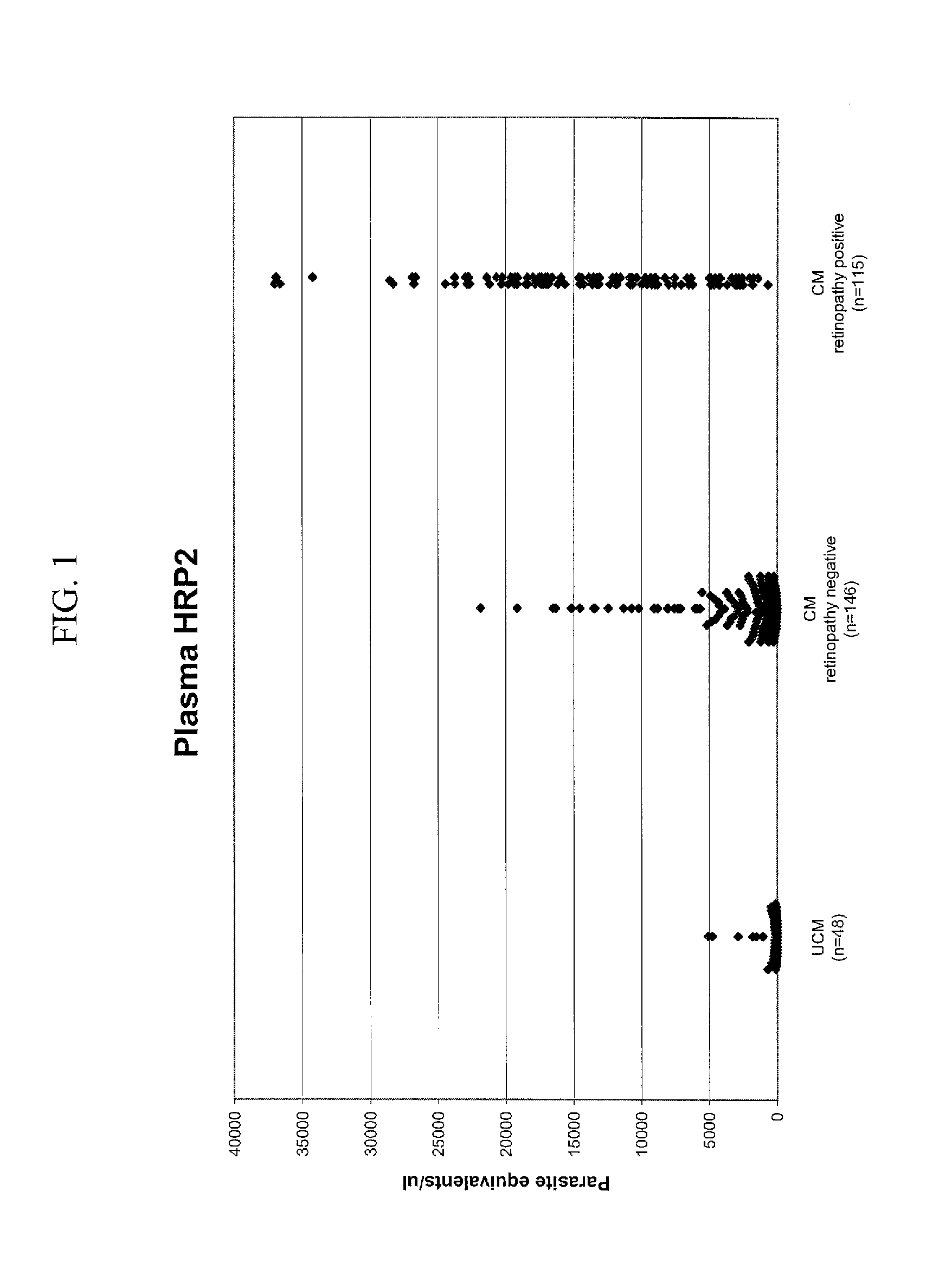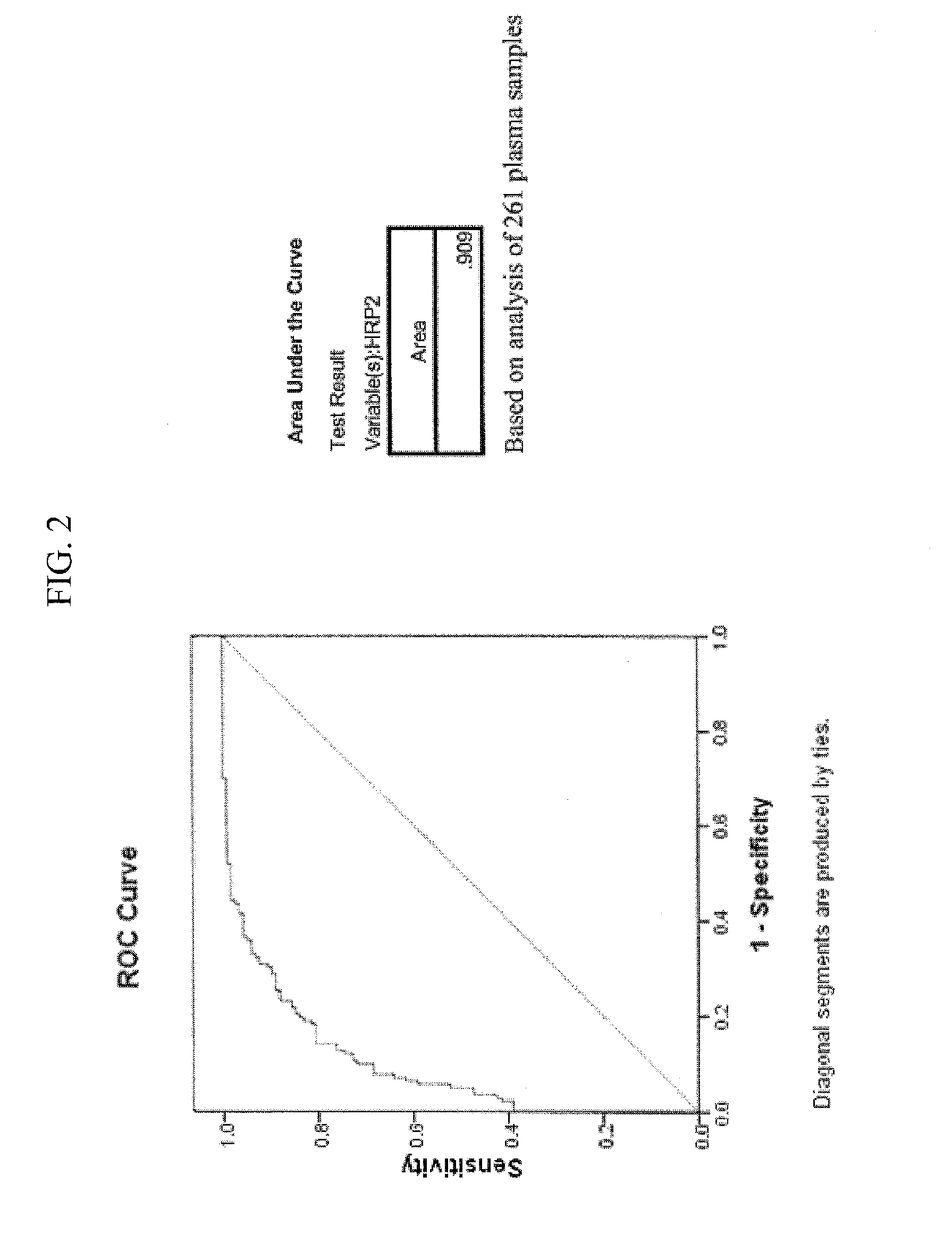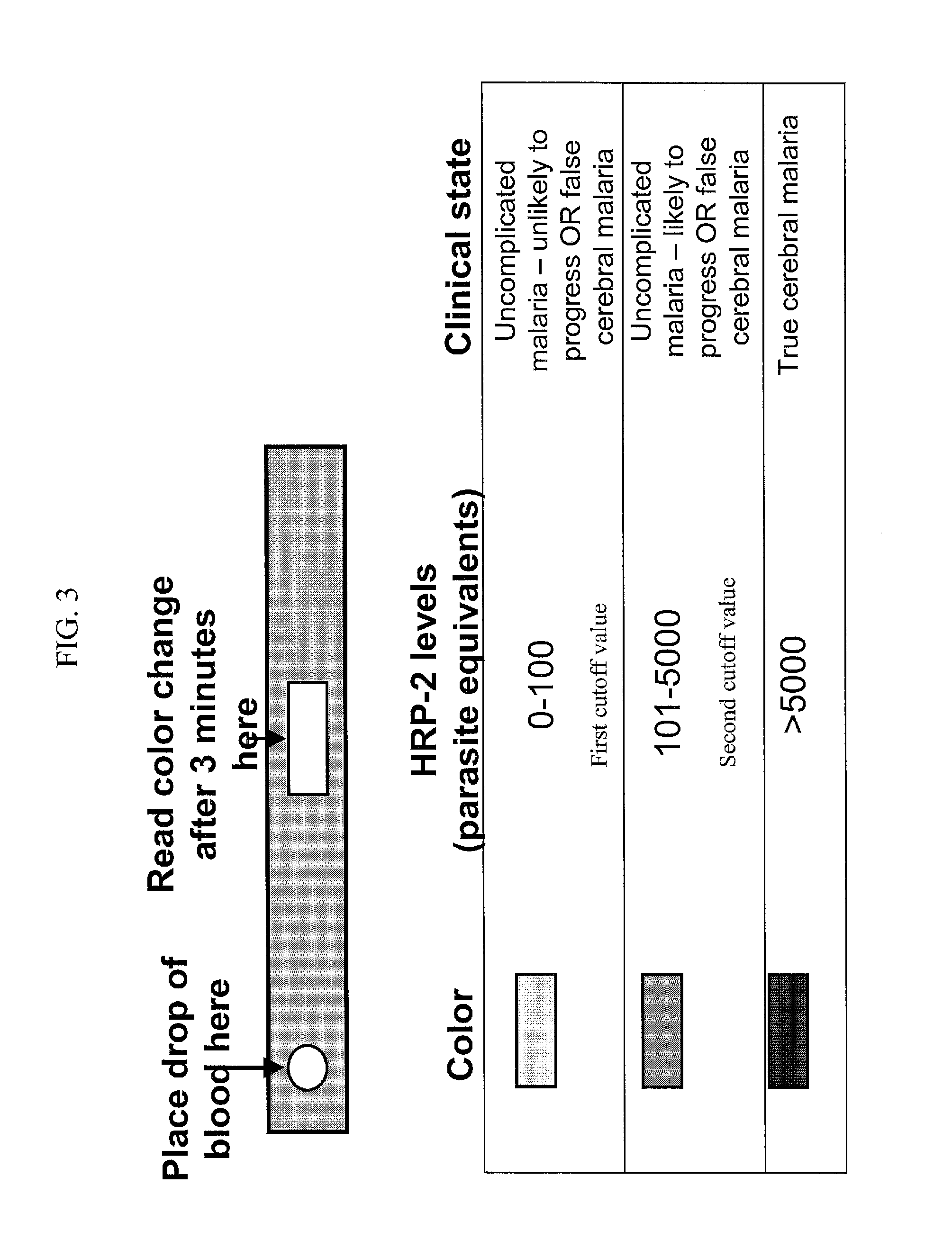Histidine rich protein-2 diagnostic test for cerebral malaria
a technology of cerebral malaria and histidine rich protein, which is applied in the direction of heterocyclic compound active ingredients, biocide, instruments, etc., can solve the problems of not providing any information relating to the progression of malarial disease or potential prognosis, tests are not capable of indicating which patients, and the diagnosis of severe malaria disease is problematic. , to achieve the effect of improving the sensitivity of analyte detection and easy confirmation of the presence or absence of analy
- Summary
- Abstract
- Description
- Claims
- Application Information
AI Technical Summary
Benefits of technology
Problems solved by technology
Method used
Image
Examples
example i
[0131]This Example describes exemplary Materials and Methods used during the discovery of a method for obtaining a cerebral malaria ROC cut-off point based upon an antibody test for detecting HRP2 proteins in the blood of malaria patients. This cut-off point in contemplated for use in embodiments of the present inventions for identifying cerebral malaria patients as a subset of patients with malaria parasitemia.
[0132]A Receiver Operating Characteristic curve (or ROC curve) was generated from children meeting the clinical case definition of cerebral malaria for use in diagnosing children with cerebral malaria.
[0133]Blood samples were obtained from children (patients) enrolled in a large autopsy based research study of cerebral malaria centered at Queen Elizabeth Central Hospital in Blantyre, Malawi (see, Taylor et al., Nature Medicine, 10:143-145 (2004), herein incorporated by reference, for further details). Children of the ages 6 months to 9 years that presented at the hospital wer...
example ii
[0146]This Example describes a contemplated exemplary diagnostic device for use with said Receiver Operating Characteristic curves (ROC) of the present inventions.
[0147]A hand-held diagnostic immunoassay device capable of providing a plasma HRP2 level for use in categorizing patients, in part for use in supporting or providing a clinical diagnosis, is contemplated for use. In a preferred embodiment, said device is for use in regions without diagnostic clinical capabilities, such as in sub-Saharan Africa, and for use during travel, for use when suspecting parasitism, and the like. Specifically, a handheld diagnostic device with a quick immunoassay read out (on the order of minutes to a few hours) for determining plasma HRP2 levels is contemplated. Such a device comprises a test strip, wherein an antibody for specifically binding to HRP2 is attached to said test strip, and a colorimetric read-out for use in combination with a read-out chart, comprising cut-off values for identifying s...
example iii
[0150]This Example describes the determination of the relationship of indictors in studies of retinopathy-positive and retinopathy-negative cerebral malaria. The studies included: 1. Cases with autopsy confirmation of disease state; 2. A retrospective study using retinopathy as surrogate marker for disease state; and 3. A prospective study including all patients admitted with clinically defined cerebral malaria during a single season.
[0151]In this Example ELISA was performed on diluted plasma samples with recombinant protein used as standard to generate quantification. Nanograms of Histidine Rich Protein—2 per mL plasma (ng HRP2 / ml plasma) was used as standard to generate quantification. Previously the standard was based up on parasite equivalents / μL plasma.
[0152]1. Cases with Autopsy Confirmation of Disease State
[0153]Archived plasma samples from patients who met the clinical case definition of cerebral malaria, died, and went on to autopsy (1996-2008) were evaluated for ng HRP2 / ml...
PUM
| Property | Measurement | Unit |
|---|---|---|
| concentration | aaaaa | aaaaa |
| fluorescent measurement | aaaaa | aaaaa |
| color measurement | aaaaa | aaaaa |
Abstract
Description
Claims
Application Information
 Login to View More
Login to View More - R&D
- Intellectual Property
- Life Sciences
- Materials
- Tech Scout
- Unparalleled Data Quality
- Higher Quality Content
- 60% Fewer Hallucinations
Browse by: Latest US Patents, China's latest patents, Technical Efficacy Thesaurus, Application Domain, Technology Topic, Popular Technical Reports.
© 2025 PatSnap. All rights reserved.Legal|Privacy policy|Modern Slavery Act Transparency Statement|Sitemap|About US| Contact US: help@patsnap.com



